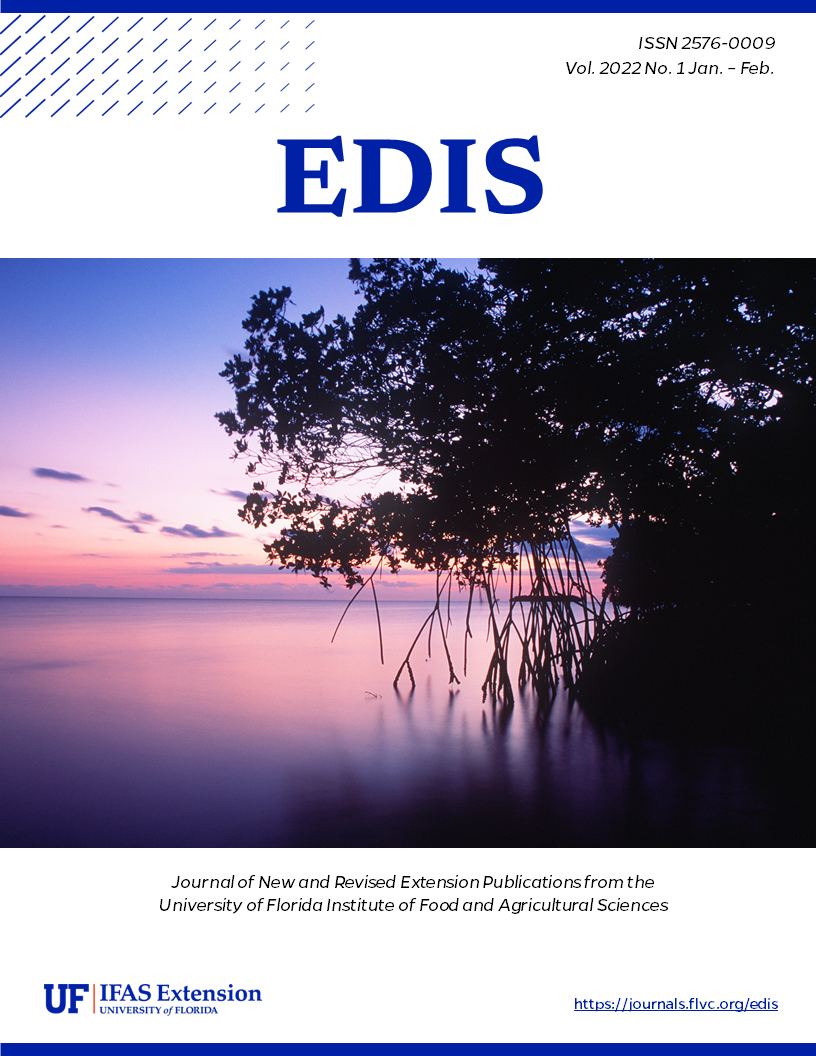Abstract
The Featured Creatures collection provides in-depth profiles of insects, nematodes, arachnids and other organisms relevant to Florida. These profiles are intended for the use of interested laypersons with some knowledge of biology as well as academic audiences.
Although the Himalayan giant honey bee Apis laboriosa Smith is the largest honey bee species in the world, it is also one of the least studied. It has a distribution mostly concentrated in the Hindu Kush Himalayan region of southern Asia.
References
Ahmad F, Joshi SR, Gurung MB. 2003. Indigenous honeybees of the Himalayas. The Himalayancliff bee Apis laboriosa Smith and the honey hunters of Kaski (Volume 1). International Center for Integrated Mountain Development. Kathmandu, Nepal. https://lib.icimod.org/record/21832
Ahmad F, Joshi SR, Gurung MB. 2007. Beekeeping and Rural Development. International Center for Integrated Mountain Development. Kathmandu, Nepal. https://lib.icimod.org/api/files/2b0d4d56-3052-430b-bce8-96fb0fabd6ff/attachment_301.pdf
Allen MF. 1995. "Bees and beekeeping in Nepal." Bee World 76(4):185-194. https://doi.org/10.1080/0005772X.1995.11099269
Allen MF, Ball BV, Underwood BA. 1990. "An isolate of Melissococcus pluton from Apis laboriosa." Journal of Invertebrate Pathology 55(3):439-40. https://doi.org/10.1016/0022-2011(90)90090-S
Anderson DL, Morgan MJ. 2007. "Genetic and morphological variation of bee-parasitic Tropilaelaps mites (Acari: Laelapidae): new and re-defined species." Experimental and Applied Acarology 43:1-24. https://doi.org/10.1007/s10493-007-9103-0
Aryal S, Thapa R, Jung, C. 2015. "An overview of beekeeping economy and its constraints in Nepal." Journal of Apiculture 30(3):135-142. https://doi.org/10.17519/apiculture.2015.09.30.3.135
Broscaru L, Dobre C, Rösick F, Halilovic A, Gulba D. 2018. "Mad honey disease." European Journal of Case Reports in Internal Medicine 5(1):000742. https://doi.org/10.12890/2017_000742
Cao LF, Zheng HQ, Hu CY, He SY, Kuang HO, Hu FL. 2012. "Phylogeography of Apis dorsata (Hymenoptera: Apidae) from China and neighboring Asian areas." Annals of the Entomological Society of America 105(2):298-304. https://doi.org/10.1603/AN11104
Chantawannakul P, de Guzman LI, Li J, Williams G. 2016. "Parasites, pathogens, and pests of honeybees in Asia." Apidologie 47(3):301-324 https://doi.org/10.1007/s13592-015-0407-5
Corlett RT. 2011. Honeybees in Natural Ecosystems. In: Hepburn H, Radloff S. (eds) Honeybees of Asia. Springer, Berlin, Heidelberg. https://doi.org/10.1007/978-3-642-16422-4_10
Engel MS. 1999. "The taxonomy of recent and fossil honey bees (Hymenoptera: Apidae; Apis)." Journal of Hymenoptera Research 8(2):165-196. https://kuscholarworks.ku.edu/bitstream/handle/1808/16476/Engel_JoHR_8(2)165.pdf?sequence=1
Hepburn HR. 2011. Absconding, Migration and Swarming. In: Hepburn H, Radloff S. (eds) Honeybees of Asia. Springer, Berlin, Heidelberg. https://doi.org/10.1007/978-3-642-16422-4_7
Joshi SR, Ahmad F, Gurung MB. 2004. "Status of Apis laboriosa populations in Kaski district, western Nepal." Journal of Apicultural Research 43(4):176-80. https://doi.org/10.1080/00218839.2004.11101133
Kitnya N, Prabhudev MV, Bhatta CP, Pham TH, Nidup T, Megu K, Chakravorty J, Brockmann A, Otis GW. 2020. "Geographical distribution of the giant honey bee Apis laboriosa Smith, 1871 (Hymenoptera, Apidae)." ZooKeys 951:67. https://doi.org/10.3897/zookeys.951.49855
Koeniger G, Koeniger N, Phiancharoen M. 2011. Comparative Reproductive Biology of Honeybees. In: Hepburn H, Radloff S. (eds) Honeybees of Asia. Springer, Berlin, Heidelberg. https://doi.org/10.1007/978-3-642-16422-4_8
Koeniger N, Koeniger G, Smith D. 2011. Phylogeny of the Genus Apis. In: Hepburn H., Radloff S. (eds) Honeybees of Asia. Springer, Berlin, Heidelberg. https://doi.org/10.1007/978-3-642-16422-4_2
Mortensen AN, Smith B, Ellis JD. 2015. The Social Organization of Honey Bees. ENY-166. Gainesville, FL: University of Florida Institute of Food and Agricultural Sciences. https://edis.ifas.ufl.edu/publication/IN1102 (2 July 2019)
Otis GW. 1996. "Distributions of recently recognized species of honeybees (Hymenoptera: Apidae: Apis) in Asia." Journal of the Kansas Entomological Society 69:311-333.
Radloff SE, Hepburn HR, Engel MS. 2011. The Asian Species of Apis. In: Hepburn H, Radloff S. (eds) Honeybees of Asia. Springer, Berlin, Heidelberg. https://doi.org/10.1007/978-3-642-16422-4_1
Roubik DW, Sakagami S, Kudo I. 1985. "Note on Distribution and Nesting of the Himalayan Honey Bee Apis laboriosa Smith (Hymenoptera: Apidae)." Journal of the Kansas Entomological Society 58(4):746-749.
Sakagami SF, Matsumura T, Ito K. 1980. "Apis laboriosa in Himalaya, the little known world largest honeybee (Hymenoptera, Apidae)." Insecta Matsumurana 19:47-78.
Smith F. 1871. "A Catalogue of the Aculeate Hymenoptera and Ichneumonidae of India and the Eastern Archipelago." Journal of the Linnean Society of London, Zoology 11(53), 285-348. https://doi.org/10.1111/j.1096-3642.1871.tb02225.x
Smith F. 1871. A Catalogue of the "Aculeate Hymenoptera and Ichneumonidae of India and the Eastern Archipelago. (continued.)." Journal of the Linnean Society of London, Zoology 11(54), 349-415. https://doi.org/10.1111/j.1096-3642.1871.tb01662.x
Tan, NQ. 2007. "Biology of Apis dorsata in Vietnam." Apidologie 38: 221-229. https://doi.org/10.1051/apido:2007002
Thapa R, Aryal S, Jung C. 2018. Beekeeping and honey hunting in Nepal: Current status and future perspectives. Asian Beekeeping in the 21st Century. Springer, Singapore. 111-127. https://doi.org/10.1007/978-981-10-8222-1
Trung LQ, Dung PX, Ngan TX. 1996. "A scientific note on first report of Apis laboriosa F Smith, 1871 in Vietnam." Apidologie 27:487-488.
https://doi.org/10.1051/apido:19960608
Valli E, Summers D. 1988. Honey hunters of Nepal. Thames and Hudson.
Woyke J, Wilde J, Wilde M. 2012a. "Swarming and migration of Apis dorsata and Apis laboriosa honey bees in India, Nepal and Bhutan." Journal of Apicultural Science 56(1):81-91. https://doi.org/10.2478/v10289-012-0009-7
Woyke J, Wilde J, Wilde M. 2012b. "Which mountain cliffs do Apis laboriosa honey bees select as nesting sites and why?" Journal of Apicultural Research 51(2):193-203. https://doi.org/10.3896/IBRA.1.51.2.08
Woyke J, Wilde J, Wilde M, Sivaram V, Cervancia C, Nagaraja N, Reddy M. 2008. "Comparison of defense body movements of Apis laboriosa, Apis dorsata dorsata and Apis dorsata breviligula honey bees." Journal of Insect Behavior 21(6):481-94. https://doi.org/10.1007/s10905-008-9144-1

